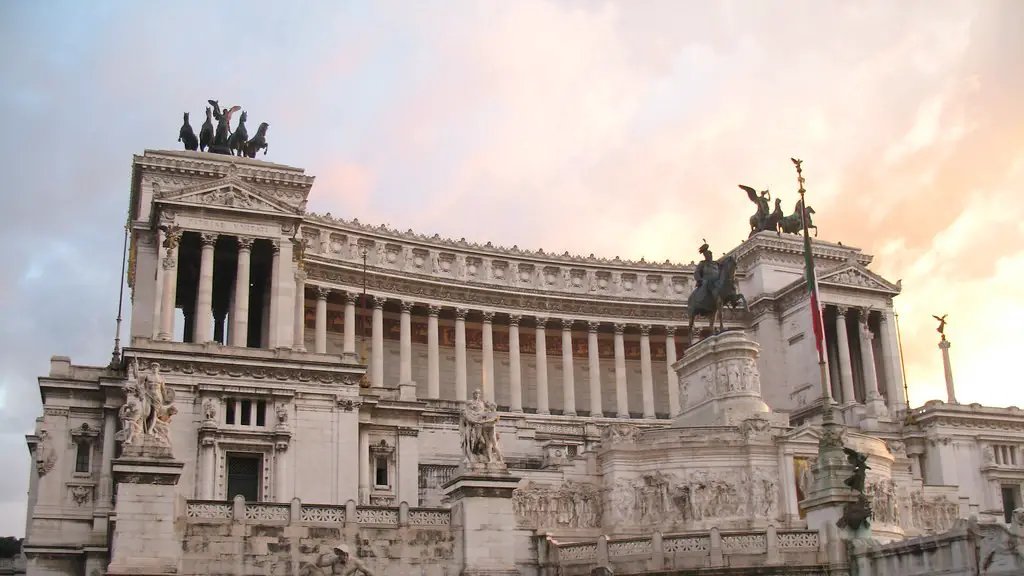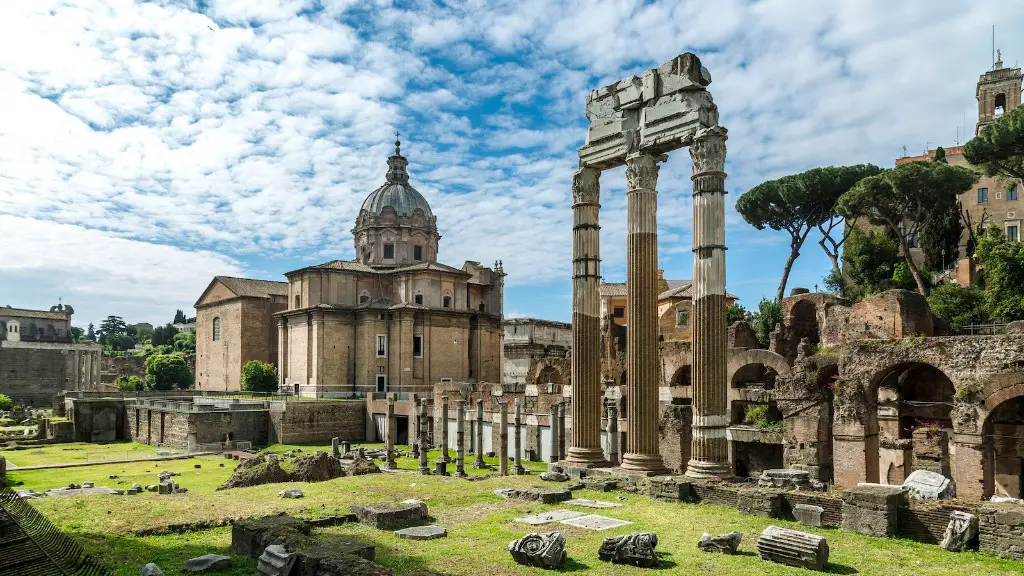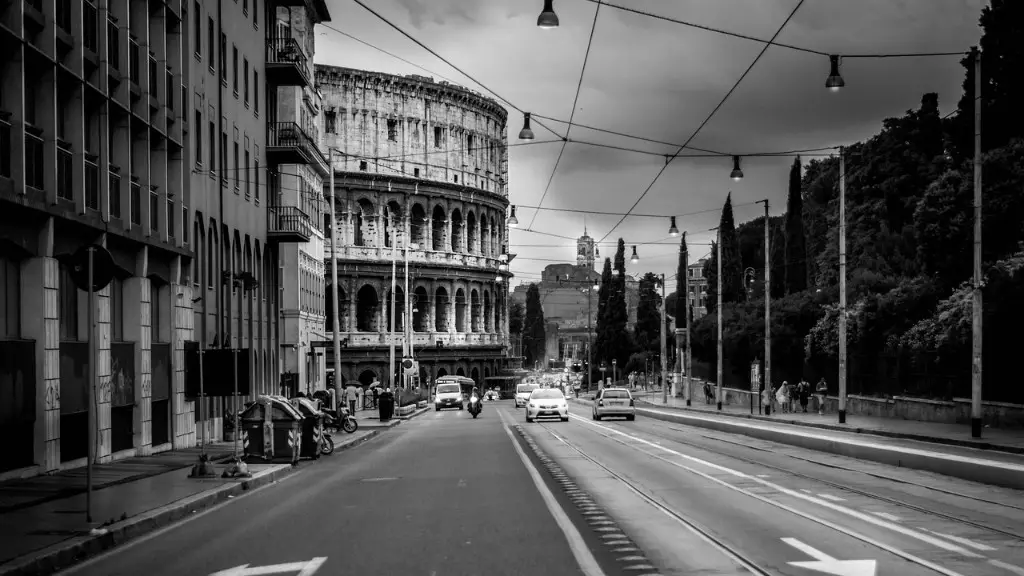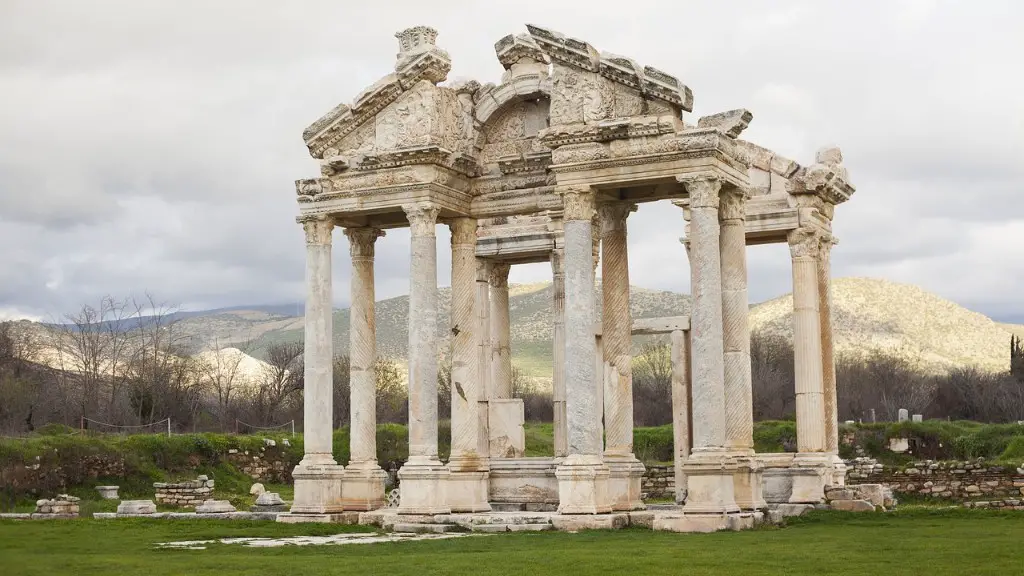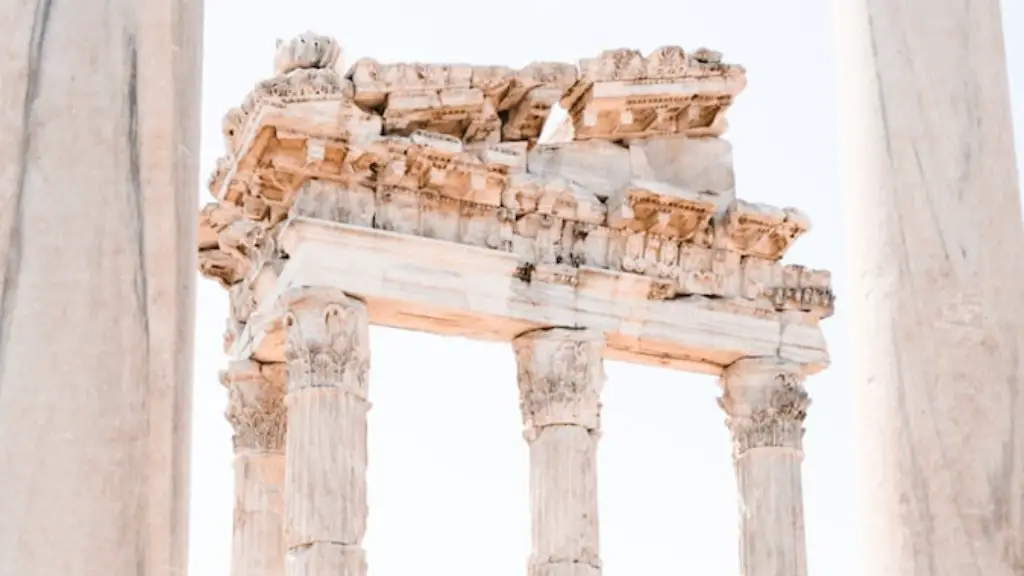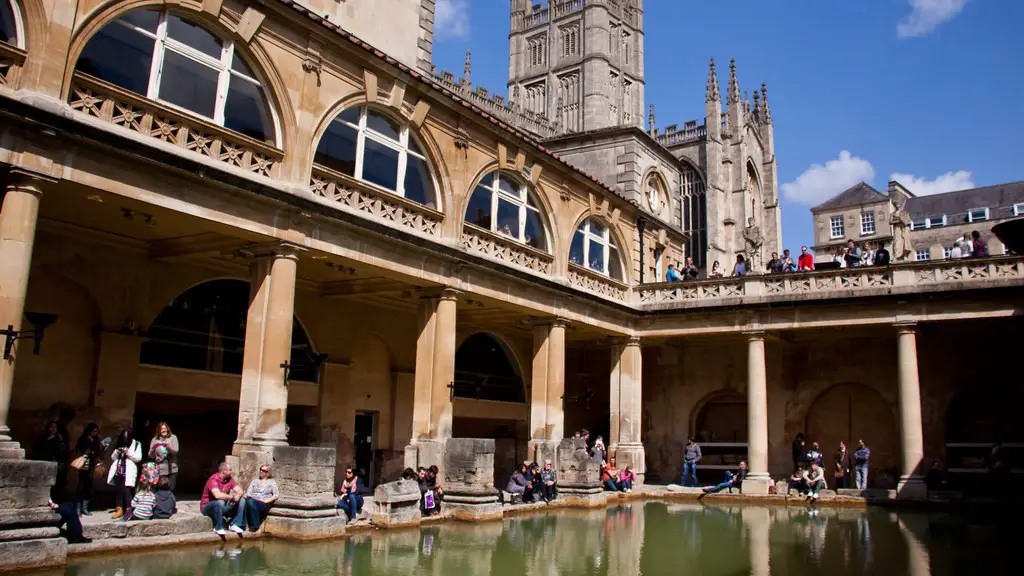Overview of Ancient Romans
The Ancient Romans were known for their architecture, literature and law codes and these were developed between the 8th Century BC and 3rd Century AD. They spread their influence throughout Europe and North Africa, punctuating their hold with the construction of cities and monuments. At the heart of their civilization was the well-oiled machine of their government. The Roman Empire spanned hundreds of years, until it eventually succumbed to the various ravages of time and evolution in 476 AD. As the Roman Empire perished, so too did their governing practices and customs. In many ways, the Ancient Romans still cast a long shadow over Western Civilization today.
Not all of the Ancient Roman culture was lost when the Empire perished. For example, many aspects of the Ancient Roman legal system have survived and are part of the foundation of modern Western law. Roman law, otherwise known as the Corpus Iuris Civilis, served as a basis for countries all throughout Europe during the Middle Ages and it continues to influence the laws of many countries today. This legal code was based on a set of written laws laid out by the Roman consuls and was intended to be applied uniformly to all citizens of the Roman Empire. This legal system was also responsible for many of the basic rights humans still enjoy today, such as the right to appeal a decision or to inherit property.
The Ancient Romans also constructed monumental structures, some of which still exist today, such as the Colosseum and Colosseum of Rome. These structures were spectacular feats of engineering for their time, and it is impressive that so many of these structures have endured the test of time. The Colosseum of Rome, for example, is still standing today, though much of its original grandeur has been eroded by centuries of wear and tear. The same is true of many other Roman structures, such as the Pantheon in Rome, which still stands today despite its advanced age.
In addition to their impressive architecture, the Ancient Romans were also renowned for their literature. The works of Roman authors such as Virgil, Cicero and Quintilian are still read and studied today. Their works helped to shape the way people view the world and humanity. This can be seen in many works of literature written today, which are often based on Roman themes. Even the concepts of tragedy and comedy were first introduced by Roman authors.
In conclusion, it is clear that the Ancient Romans still have a massive influence on the Western world as we know it today. This can be seen in the many aspects of their culture that have endured, such as the legal code, their literature and their impressive monuments. While the Roman Empire itself is long gone, its influence can still be felt all around the world.
Roman Religion
The religion of the Ancient Romans was highly influential throughout their civilisation, as religion was a powerful force which bound members of society together. Roman religion was polytheistic, meaning that they believed in many different gods and goddesses who each had their own purpose and domain. The Roman gods were based on the pantheon of Greek gods, with many sharing the same names. Gods such as Jupiter, Juno, and Mars were all central figures in Roman religion.
Roman religion was central to the structure of their society and was used to explain natural phenomena and everyday life. It was also used as a form of social control, as citizens were encouraged to obey and respect the gods, and to participate in traditional religious practices. Religion was also used to help define and differentiate Roman citizens from other peoples. For example, the traditional Roman practices of feasting and sacrifice were seen as being uniquely Roman.
Roman religion was also influential in the everyday life of citizens, as every aspect of their lives was reliant upon the blessing of the gods. This could be seen in the way that religious ceremonies and festivals were held to honor the gods, and in the many superstitions which surrounded everyday life. People believed that the gods could have a direct influence on their lives, and they could manipulate them through the use of offerings and sacrifices. As a result, there was a deep respect for the gods.
Religion was also closely tied to the structure of the Roman state. The gods were seen as protectors of the state and its citizens, and the emperor was seen as a living embodiment of the gods. As a result, the emperor was seen as being in direct contact with the gods and could use this to his advantage. Emperors were often deified after their death, and many were seen as divine rulers rather than mortal men.
In conclusion, the religion of the Ancient Romans has played a significant role in their civilisation and has had a major influence on the way society is structured today. Although the beliefs of the Roman gods have fallen out of favour in modern times, their legacy can still be seen in the many superstitions, beliefs, and rituals which exist today.
Roman Language
The language of the Ancient Romans was Latin, a branch of the Italic languages which were derived from the Indo-European language family. Latin quickly spread throughout the Roman Empire and developed into a language of literature and law. It eventually evolved into the Romance languages which are spoken today, such as Italian, Spanish, French and Portuguese.
The Latin language was very influential throughout the Roman world and its effects can still be found today. This can be seen in the many English words which have been borrowed from Latin. For example, the words animal and filial both come from the Latin language, as do many other terms which are used in modern English. In addition, many of the legal terms used in English are derived from the Latin language.
Latin was also an important language for the Catholic Church, as many of the documents used by the Church were written in Latin. This language was used to create a unified religious doctrine, as it allowed documents to be understood by priests throughout the world. As a result, the use of Latin in the Catholic Church has allowed its doctrines to remain consistent while they have been passed down through generations.
In addition to its use in literature and the Church, Latin was also an important language in science and philosophy. This can be seen in the works of Roman philosophers such as Cicero, who wrote in Latin, and in the works of scientists such as Ptolemy, who wrote in Latin. This language was also instrumental in the advancement of medicine, as many of the works of the Ancient Greek physicians were translated into Latin.
In conclusion, the Latin language has been instrumental in the development of Western culture. Its influence can be seen in many aspects of our lives, from words in the English language to the doctrines of the Catholic Church. Even today, the influence of Latin can be felt in the works of scientists and philosophers who write in Latin.
Roman Art and Architecture
The art and architecture of the Ancient Romans has had an immense influence on the world today. The Romans were widely renowned for their skill in the arts and crafted incredibly complex and impressive monuments and structures with their limited resources. Two of the most iconic and lasting marks of the Roman Empire are the Colosseum of Rome and the Pantheon.
Both of these structures remain standing today and have become symbols of the Roman Empire’s prowess and resilience. The Colosseum of Rome is a testament to the Romans’ engineering capabilities and is still a renowned destination for tourists today. The Pantheon, on the other hand, is a perfect example of the Roman’s architectural prowess and shows their skill at designing and constructing complex structures.
The art of the Romans was also highly influential. The Roman’s realism and attention to detail in their sculptures has been particularly noteworthy, as can be seen in the beautiful sculptures of the gods and goddesses fromRoman mythology. Even today, these sculptures are renowned for their skillful craftsmanship and creativity. Roman mosaics and murals in baths and houses are also a testament to the talent of Roman artists.
The art and architecture of the Roman Empire has had an immense influence on the world today. The legacy of the Romans can be seen in many of the buildings and sculptures which still exist today, as well as in the inspirations they have provided to modern architects and artists. The genius of the Romans lives on in the world today and can be seen in their impressive and enduring art and architecture.
Roman Government
The government of the Ancient Roman Empire was highly influential and provided the basis for much of the Western political systems today. The Roman government was highly centralized, with a complex bureaucracy which was divided into several branches. This meant that all laws and regulations were passed down from the central government to the provinces and cities. The government was also extremely efficient, with tax collectors and bureaucrats working together to ensure the smooth functioning of the Empire.
The Roman government also had its own set of principles which was heavily influenced by the Roman religion. This meant that the citizens of the Roman Empire had to obey the law of the gods, which was seen as the law of the land. This meant that citizens were expected to adhere to a strict set of morals, and any violations were severely punished. This law of the gods was also seen as a check on the power of the Roman government, as the gods were seen as being able to punish those who violated their laws.
The Roman government also had a strong military, which was essential in maintaining control of the provinces and in keeping peace and security amongst the people. Rome also had its own system of justice, which helped to ensure that all people were treated fairly and that justice was served. This system of justice was based upon Roman law, which was seen as being superior to other legal systems due to its rigour and fairness. This system of law is still in use today in many countries around the world.
In conclusion, the government of the Ancient Roman Empire has had a significant influence on the Western world today. Its efficient bureaucracy, system of justice and strong military have all been emulated in modern governments. The legacy of the Roman government lives on in many countries today, and it is clear that its influence lasted far beyond the fall of the Empire.
Roman Technology
The Ancient Romans were far ahead of their time when it came to technology. They were the first to develop systems of aqueducts and sewage systems, which allowed them to manage their water supply and provided them with clean drinking water. They were also advanced in the fields of engineering and mathematics, and were able to construct complex structures such as bridges and buildings.
The Romans were also skilled in the use of tools. They developed a wide range of tools for the construction and maintenance of the Empire, such as levers, pulleys and cranes. They were also adept at engineering, and were able to construct ships, machines and tools which were far superior to those of other civilisations at the time.
The Romans were also advanced in the field of warfare. They developed a wide range of weapons which allowed them to become one of the most powerful civilisations in the world. Their mastery of engineering and mathematics meant that they were able to create incredibly powerful and sophisticated weapons, such as the catapult and the ballista. The Romans also mastered the art of siege warfare, which meant that they were able to quickly and effectively conquer and defend their cities.
In conclusion, the technology of the Ancient Romans was highly advanced and allowed them to become one of the most powerful and influential civilisations of their time. Their ability to harness technology and use it to their advantage allowed them to achieve greatness and their legacy still lives on today in our modern-day technology.
